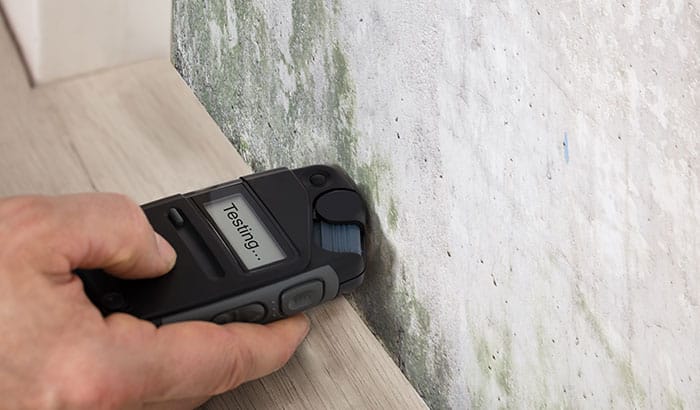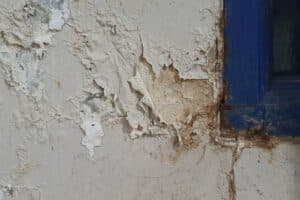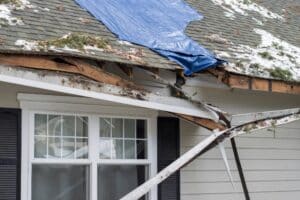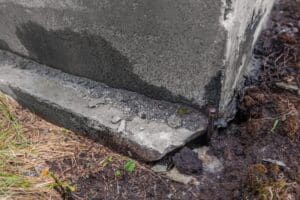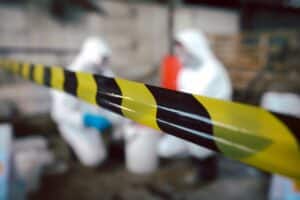A mold test determines whether you have mold growing in your home, but is it something you can do on your own, or do you need professional help?
Mold grows wherever it finds a welcoming home. Sometimes, we provide that home without knowing it and have a problem to resolve. Short-term exposure isn’t likely to cause many issues, but it will if you don’t take care of it promptly.
A mold test is one of the best ways to determine whether what you have is mold or something else. Keep reading to learn more about mold, the difference between mold, dirt, and mildew, and how you can identify mold in your home.
What Is Mold?
Let’s get started by defining mold. A fungus that grows from floating spores, mold can grow wherever those spores land if it’s moist and between 40 to 100 degrees Fahrenheit. You might be surprised at how many places in your home fit these criteria, so it’s vital to be proactive in preventing mold.
What Does Mold Look Like?
There isn’t a single universal color for mold because there are different kinds. Some are green, brown, black, or even pink! Let’s take a closer look at the type of mold so that you’ll have an idea of what you’re looking at.
Cladosporium is brown, green, or black. It grows on wood, carpets, fabrics, and heating/cooling ducts.
Penicillium is blue, green, or yellow. You can find it under carpets, basements, and insulation.
Aspergillus is a powdery green, white, or gray with dark spots. It grows on fabrics, walls, attics, basements, and dry foods.
Alternaria is white with black spots. It grows on fabrics and wallpaper.
Aureobasidium is pink with black spots. It grows on wood, walls, caulking, and grout.
Stachybotrys chartarum is greenish-black and grows wherever there is cellulose. Examples include paper, fiberboard, and drywall.
Trichoderma is creamy white but will become green when the spores release into the air. It grows on wood and windows.
The Difference Between Mold and Dirt
It’s easy to look at dirt and wonder if it’s mold because they often look the same unless you notice Trichoderma or Aspergillus.
The fastest way to tell whether mold is growing in your home is to dilute bleach with water (1 part bleach, 16 parts water) and dab it on the wall with a Q-tip or swab. No difference indicates that it genuinely is dirt, not mold. It’s mold if the spot quickly grows lighter or reappears a few days later. That means it grew back.
The Difference Between Mold and Mildew
Both mold and mildew are fungi — microscopic organisms that thrive in moisture and have digestive enzymes to consume everything organic that they can find. Both will grow wherever conditions allow, as discussed earlier in this blog.
Mold has a higher profile and grows fuzzy over time, while mildew lies flat on the surface. Mold’s colors are darker, while mildew starts out white before turning brown or gray. Mold is often mistaken for dirt, but mildew is more evident with its powdery, dotted look.
DIY Mold Test Methods
As we mentioned, you can test an area with diluted bleach to see whether it’s dirt or mold. But that’s not the only way to test for mold. Here are a few more options.
Screwdriver Test
Do you suspect mold in the structure of your home? You can test the area with a screwdriver to see what’s happening. If there’s softness or crumbling, you’ve got fungi that have been growing and are rotting away at your home, requiring immediate remediation.
Look for Leaks
Do you suspect mold growing on an outside wall? Or perhaps your ceiling? Look for leaks! If you notice one, you likely have mold growing in the area from rotting wood. Check vents, roof flashing, decks, and window wells for signs of leaks.
Inspect Ductwork
Mold will often hide in ducts, which easily act as breeding grounds for mold. It’s no wonder, with the warm, moist air trapped in ducts — condensation forms in uninsulated ducts or ducts that don’t have a vapor barrier.
Removing Mold
Removing mold is a process that you must follow very carefully to ensure you don’t get sick from the mold. You’ll want to wear old clothes that you can throw away and an N-95 or P-100 respirator. You’ll also want to wear goggles over your eyes and gloves on your hands.
Ventilate the room before you start. The more air you have circulating, the less likely you are to get sick from the mold. Use a fan you don’t mind throwing out after you’ve used it since it will likely attract mold spores you can’t get off. You don’t want to blow mold spores into other areas of your house.
After you’ve removed the mold, clean the area with an antimicrobial spray or soap and water. This will sanitize where the mold was. You’ll want to dispose of moldy carpeting and debris carefully. Use 6-mil plastic for the carpet and double-bagged garbage bags for debris.
Be sure to throw away your clothes and shower once you’re done to ensure no mold is left behind in your home.
Call Black Diamond Restoration Today
Do you suspect mold in your home? Have you conducted a mold test that confirmed it? While you can try removing mold from your home yourself, it’s a dangerous task you might want to leave to the professionals.
Instead of bagging up your rotting, moldy debris, stay away from the scene while the professionals take care of it. The experts at Black Diamond Restoration know how to handle mold damage in all its forms. We’ll repair, remediate, and restore your home so it’s good as new.
Call us at 801.512.4194 to schedule an appointment with Black Diamond Restoration and get rid of that mold once and for all. Get started today!

